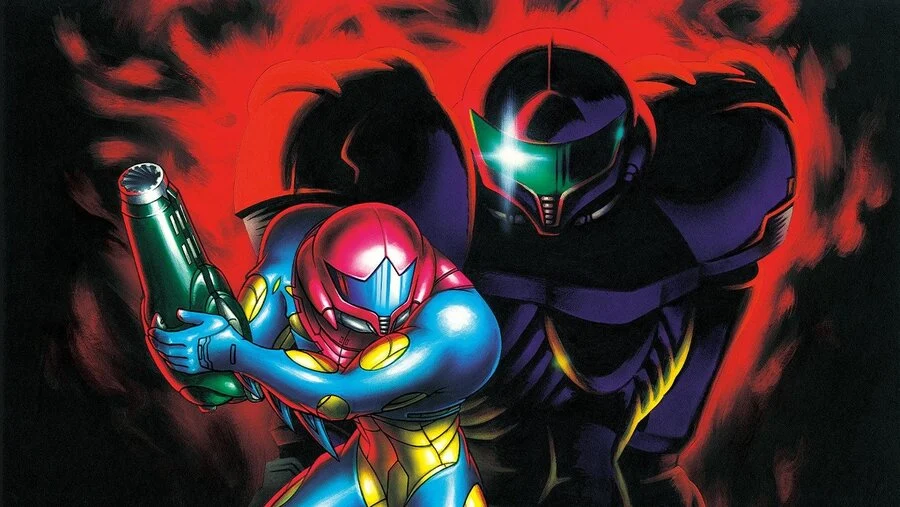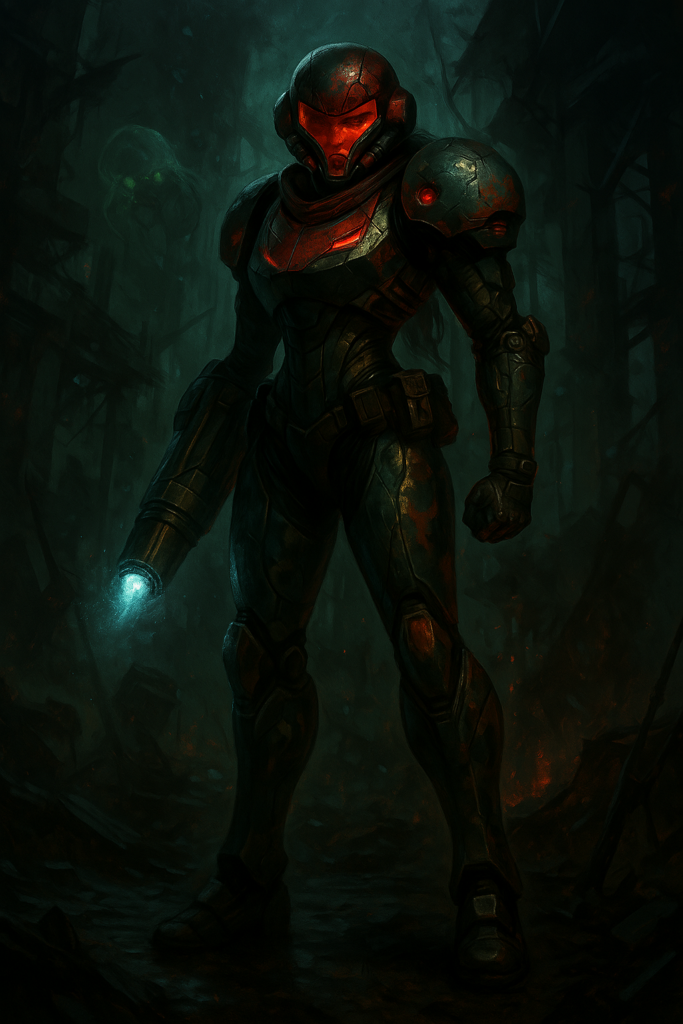

Prefer to listen instead?
Dive into our full Metroid Fusion deep dive now in audio! Press play to hear the article brought to life, exclusively from Pixlehale.
Revisiting a Sci-Fi Classic
Released in 2002 for the Game Boy Advance, “Metroid Fusion” remains one of Nintendo’s standout titles, blending sci-fi horror with tight, compelling gameplay. More than two decades later, its influence resonates, not just because of its refined mechanics and gripping atmosphere, but also through its subtle yet powerful social commentary and progressive character dynamics.
The game’s narrative and thematic richness has ensured its enduring popularity among fans and critics alike. “Metroid Fusion” not only revitalized the Metroid franchise but also set new standards for storytelling in gaming, offering depth beyond typical action-oriented titles of its time.
Breaking Norms: Samus Aran as a Groundbreaking Protagonist
“Metroid Fusion” picks up with iconic bounty hunter Samus Aran, whose groundbreaking identity as a female protagonist challenged gaming norms since her reveal in the original “Metroid” (1986). Samus isn’t merely a token female character; she’s an assertive, capable heroine whose gender neither limits nor defines her role. Throughout “Fusion,” Samus navigates isolation, identity, and survival, as her suit becomes infected by a deadly parasite known as “X.” This biological threat forces her into a symbiotic relationship with Metroid DNA, altering her identity on both physical and thematic levels.

Her character development throughout the series, culminating significantly in “Fusion,” reflects broader societal shifts around gender representation in media. Samus is complex, portraying strength through vulnerability and adaptation rather than traditional tropes of invincibility or aggression. Her compelling narrative encourages players to see beyond stereotypes, contributing to more inclusive storytelling within gaming culture.
Atmosphere and Gameplay: Navigating Fear and Isolation
The atmosphere of “Fusion” is steeped in tension and claustrophobia, reminiscent of films like “Alien,” where isolation amplifies fear. This environment pushes players to deeply empathize with Samus, whose vulnerability here starkly contrasts with her usual stoicism. The SA-X, a parasite mimicking Samus’s previous self, stalks her relentlessly, symbolizing internal and external struggles of identity and transformation.
This element of being hunted by a former version of oneself resonates on multiple psychological levels, tapping into universal fears of inadequacy, impostor syndrome, and loss of self-control. Furthermore, the game cleverly utilizes limited visibility and haunting audio cues to amplify tension, immersing players fully into Samus’s harrowing ordeal.
Socially, “Metroid Fusion” subtly addresses fears of infection, contagion, and loss of identity, resonating with contemporary anxieties around bioengineering and pandemics. Samus’s physical transformation, combined with her necessity to adapt and embrace the Metroid DNA, parallels real-world narratives of resilience and adaptation in the face of adversity. Additionally, the game’s underlying narrative about corporate experimentation gone awry comments on the ethical boundaries of scientific research and commercialization.
Gameplay Mechanics: An Engaging Experience
Regarding gameplay, “Fusion” remains a masterpiece of tight controls, strategic combat, and exploration. It skillfully guides players through environmental storytelling, letting them uncover the narrative organically through exploration, rather than through heavy exposition.
The game’s design emphasizes careful planning and adaptability. Players must thoughtfully approach enemy encounters and environmental puzzles, enhancing the satisfaction of progression and mastery. This methodical gameplay aligns well with its narrative themes of survival and adaptation.
Moreover, the game set a precedent for future titles, influencing narrative structure and character development in gaming. By centralizing a powerful, complex female protagonist, it expanded the industry’s perception of heroes, proving that nuanced, compelling storytelling could successfully intersect with engaging gameplay.
Why Metroid Fusion Still Matters
As gaming continues evolving socially and culturally, revisiting “Metroid Fusion” offers valuable insights into how games reflect and shape societal attitudes. Samus Aran remains emblematic—not just as a female protagonist, but as a universally relatable figure facing fear, transformation, and survival. “Metroid Fusion” isn’t merely a nostalgic classic; it’s a thoughtful exploration of identity, ethics, and strength in vulnerability, resonating deeply with contemporary players exploring these same themes in today’s complex world.
In an era increasingly conscious of representation and ethical implications, “Metroid Fusion” serves as a benchmark for integrating meaningful narrative depth with engaging gameplay. Its legacy continues to inspire developers and players alike, solidifying its place as an essential title in video game history.
Sources: Information in this article was drawn from official Metroid Fusion game materials, interviews with series producer Yoshio Sakamoto, and retrospectives from outlets like IGN, GameSpot, and Kotaku. Additional context was informed by community-driven documentation from Metroid Wiki, academic discussions on gender in video games, and thematic analyses comparing Fusion to sci-fi horror films and postmodern narratives.